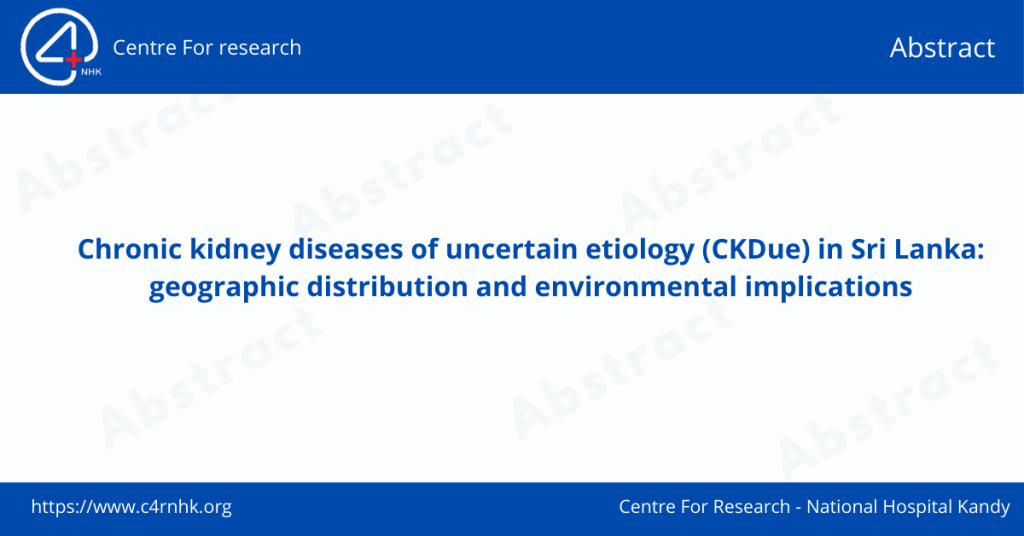Asia-Pacific Academic Consortium for Public Health (APACPH)- 2020
Dasanayake DRTS 1, Pathiranage AMSD 1, Basnayake BMDB2, Aththanayake AMIS2, Samarakoon HT2, Nanayakkara N2
1Faculty of Allied Health Sciences, University of Peradeniya, Sri Lanka
2National hospital, Kandy, Sri Lanka
Introduction and objectives-Individual nutritional practices adhering to general dietary recommendations are decisive in long term Continuous Ambulatory Peritoneal Dialysis (CAPD). Complexity in understanding dietary restrictions result in difficulties in sticking to proper practices leading to dietary non-adherence. This study was aimed to assess impact of dietary practices in adhering to dietary guideline recommendations.
Methods-This cross-sectional study was on randomly selected 102 CAPD patients at National Hospital Kandy. Dietary data was collected using an interviewer administrated food frequency questionnaire. Daily dietary intake compared with European Society for Parenteral and Enteral Nutrition(ESPEN) guideline recommendations.
Results-In relation to protein, potassium, phosphorus, sodium and fiber, dietary adherence was poor in comparison to ESPEN recommendations. Percentages of participants consumed protein rich food sources were, chicken(1%), other-meats(2%), egg-white(24.5%), fish(6.9%), cheese(1%). Less protein consumption is link with lower consumption of phosphorus, because most protein rich foods rich in phosphorus too. Daily consumption of fruits and vegetables were 14.7% and 97.1% respectively. Although vegetable consumption was high, 30.3% were used to boil them before consumption. These practices may lead to lower dietary fiber and higher potassium bioavailability. Stern restrictions on salt (18.7%) or use of alternative salts (20%) limit the food variability and lower sodium intake.
Conclusion-As per our results lower adherence to dietary recommendations were common among CAPD patients. Rigorous restrictions on diet not only lead to poor dietary practices but also reduce the satisfaction on food. Proper educational models are required to understand the principals of nutritional requirements rather than blind restriction in this community.
Keywords: CAPD, Dietary adherence, recommendations, Dietary practice


